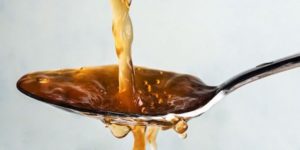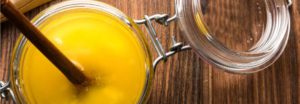The human gut is home to trillions of microbes, which collectively are called the gut microbiome. There are about as many microbial cells in our body as there are human cells. Most of these microbes are in the large intestine. Since what we eat and drink passes through our large intestine every day, hence it’s no surprise that our diets affect our gut microbiome.
Two components of our diet that majorly affects the microbiome and is majorly responsible for our gut health are prebiotics and probiotics. The most common questions that arise are what are prebiotics and probiotics? In what ways do they support our gut? What are the good sources to have them in our meals?
In very simple terms consider that probiotics are the good bacteria in our gut and prebiotics as the food for probiotics. They both work in synergy in a way that without prebiotics, probiotics would starve causing problems to our body like – constipation, reduced immunity, leaky gut. And adding prebiotics to our meal would not add any value to our body since they are only used to feed the probiotics.
1. Probiotics: Our gut has both good and bad bacteria, probiotics are the good ones and help the body in a variety of ways like in break down and digestion of our food, enhance or restore the health of our gut microbiome, supports the immune system, controlling high blood pressure, treating or preventing diarrhea and have a contribution in our mood too (to study more on these benefits you can refer to the links below).
There are a lot of sources for probiotics that sour and fermented plant-based food:
- Apple cider vinegar(with mother): Having raw ACV on a regular basis has been shown to be useful in maintaining normal body processes. Having ACV with the mother will give you body the essential probiotics since the mother part has hundreds of strains of good bacteria.
- Pickles: Fermented pickles made with salt and water have lots of live microorganisms present in them and are a good source of probiotics for the Indian context. An important thing to note is that a lot of pickles are made with vinegar and do not contain live probiotics.
- Yogurt
- Curd: Curd is not truly probiotic, but its benefits are very similar to that of probiotics.
- Kefir: It can be easily made at home and is a very rich source for probiotics, all you need is milk and starter kefir grains that are needed to be purchased only once.
Note: Its best to eat a variety of probiotic food in our meals since there are different kinds of strains in each of them. Also, not all types of fermented food qualify as probiotics.
2. Prebiotics: Prebiotics are food components that microbes break down and use as energy while providing beneficial compounds like short-chain fatty acids for our bodies to use. These are the food for the good bacteria. Most prebiotics are received by our in high-fiber foods that aren’t broken down by human digestive enzymes and make it to the large intestine where they’re fermented by gut bacteria. With scientific names such as oligosaccharides, galactooligosaccharides, and inulin, prebiotics have anti-inflammatory and anti-cancer properties and are helpful in the absorption of essentials minerals in our body, normalizing the blood sugar levels and boosting bone health. All prebiotics are fiber, but not all fiber is prebiotic.
The following are good sources of prebiotics:
- Garlic: It’s best to consume food in which garlic is present in raw form, or you can make a habit of eating two cloves of garlic with water.
- Onions and green onions: You can consume them raw or in cooked forms, both offer prebiotic to the body.
- Asparagus: Eating raw or steamed is best.
- Bananas: For the best prebiotic benefit, eat under-riped ones.
- Whole grains: Like barley, oats, and brown rice.
- Legumes: Like lentils, peas, chickpeas, and beans.
Note: Consuming prebiotic vegetables in raw forms is best because their fiber content is preserved in raw forms.
References:
https://www.ncbi.nlm.nih.gov/pubmed/21069673



